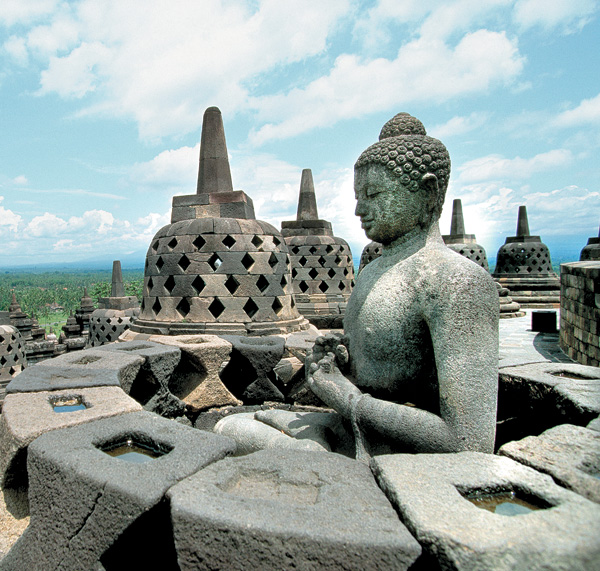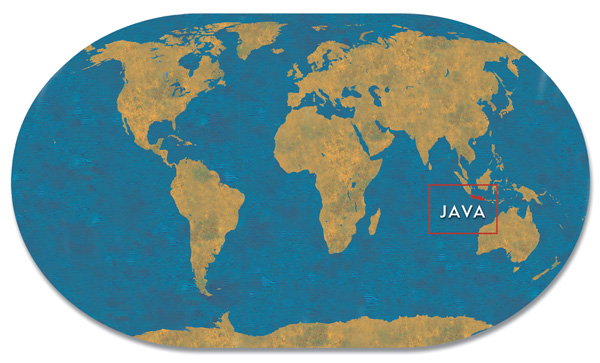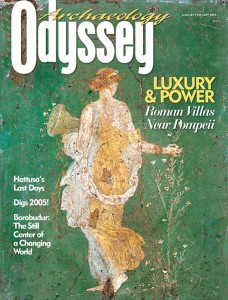Horizons: The Cosmic Mountain: Borobudur
On the Indonesian island of Java stands the world’s largest Buddhist monument, the still center of our changing universe.

Now the most populous Muslim nation in the world, Indonesia was once home to powerful Hindu-Buddhist kingdoms. (Today, however, the island of Bali remains the only Hindu enclave in Indonesia.) In the late eighth century A.D., a Buddhist kingdom, the Sailendra dynasty of Central Java, created one of the most enduring monuments to human spirituality ever built: the Borobudur Temple.

Although little is known about early Javanese history, the Borobudur Temple was clearly deliberately set in the midst of soaring volcanic mountains. The temple’s many stupas (mound-shaped objects or structures, a form used by Buddhists for shrines and reliquaries) resemble cone-shaped volcanic mountains, and the temple was built of yellowish brown andesite, a volcanic rock that covers much of Java. By the 15th century, Java had become thoroughly Islamic, and the Borobudur temple fell out of use and into neglect. It was rediscovered in 1814 by the British explorer Thomas Raffles, who found the temple buried and in ruins. It was rebuilt in the early 20th century and massively restored—with each of its 2,000,000 blocks removed and cleaned—between 1973 and 1983.
Already a library member? Log in here.
Institution user? Log in with your IP address.

